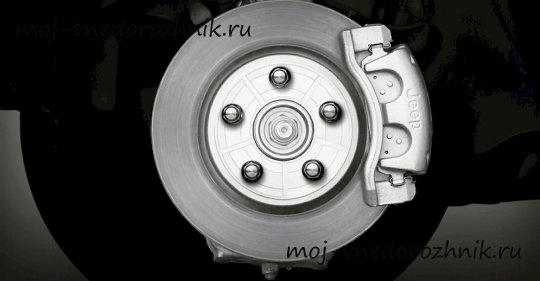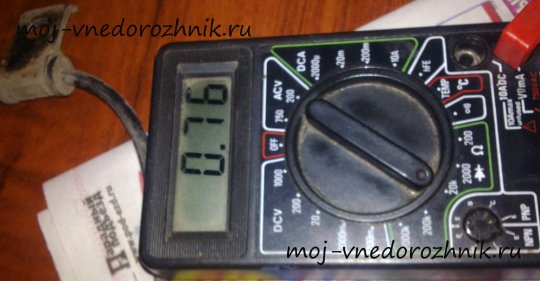Immediately after turning on the power, the “ABS” indicator light should light up on the car’s dashboard, indicating that the car’s electronic unit is ready for operation. If everything is in order with the car, then after a couple of minutes the inscription disappears. But the ABS unit may well fail: how to check the ABS sensor and understand what exactly is broken?
How does ABS work?
The development of the system, which began to be actively installed on manufactured cars in the 1970s, brought the concept of safety to a new level.
It consists of:
- control unit;
- hydraulic drive;
- controllers that control wheel speed;
- mechanism providing braking.
The control unit is considered the most important: it evaluates the signals coming from the sensors. The data is analyzed online, and the system understands what is happening with the car: it is slowing down or starting to go faster. Next, the processed data is transmitted to the hydraulic unit.
The brake cylinder is responsible for transmitting the pressure necessary to create the pressing force that ensures that the pads are pressed against the discs. Regardless of how hard the driver presses the brake, the pressure level in the system will be the most optimal. The main advantage of ABS is the ability of the system to analyze the condition of each wheel individually, selecting the most appropriate pressure and preventing blocking. Braking to a complete stop is ensured by the pressure generated in the brake drive.

On all-wheel drive and rear-wheel drive cars, a single sensor is installed, located on the rear axle: data to the main unit responsible for control comes from the nearest wheel, and a signal setting the required pressure level is sent to all wheels at once.
There are three possible operating modes for the valve control device:
- if the inlet valve is open and the outlet valve is closed, the pressure will increase, since there is no obstacle to this;
- the inlet valve can remain closed after receiving a corresponding signal, which ensures that the pressure level remains unchanged;
- The exhaust valve opens and the inlet valve closes, which helps reduce pressure.
The presence of these operating modes ensures that the increase or decrease in pressure will occur smoothly. When any problems arise in the operation of the ABS system, the brake mechanism begins to function without its participation, and a corresponding notification lights up on the panel.

How to check the serviceability of the ABS sensor yourself
When the sensor begins to function incorrectly, the anti-lock braking system stops receiving signals and responding to them properly, which can lead to wheel locking.
The sensor is an inductance coil that operates simultaneously with a toothed disk located on the hub.
ABS diagnostics show that one of the most common causes of malfunction is a cable break. A soldering iron, a special cord intended for repairs, and a tester will help determine the nature of the malfunction.

The cable contacts are connected to the connectors, then the tester sets the resistance of the unit (the resulting value must be within the permissible limits specified in the device’s operating manual). A resistance close to zero indicates a short circuit, but if the resistance goes far beyond the maximum values, there is a break.
Checking the wheel is the next step: changing resistance means that the sensor is working and does not need to be replaced. Detected breaks must be eliminated: any break is corrected by soldering, but in no case by twisting, which reduces the likelihood of new breaks and the start of the oxidation process to a minimum.

If diagnostics of the ABS sensor show that it is faulty and cannot be repaired, it must be disconnected and replaced with a new one.
How to properly check the ABS sensor for performance in order to prevent failures in its operation in the near future? To do this, you need to inspect the contacts of the device and make sure that the wiring is in good condition: the second most popular reason for the malfunction of the unit is a violation of its integrity.
If the ABS light comes on, a special diagnostic system will help simplify diagnostics of the unit and save money on a trip to a car service center, allowing even a non-specialist to carry out the check: after it starts, error codes will appear on the screen. You can find out what they mean using the instructions supplied with the device.
Main types of ABS malfunctions
Sometimes when you press the brakes, a rattling sound occurs, making drivers think that there is something wrong with their vehicle. But this sound is not a sign of a breakdown: cracking can occur while the modulators are operating.

If the ABS fails, then after starting the engine the icon on the panel does not go out, continuing to light all the time.
During the diagnostic process, the following malfunctions may be detected:
- An error found during testing is removed by the ABS system itself. This does not mean that the malfunction has been eliminated: simply, either an error occurs in the main controller unit, or there is a break in the sensor wiring.
- When the ABS starts, self-diagnosis takes place in normal mode, but then the device turns off spontaneously. Possible causes include poor-quality contacts or their oxidation, a break in the cable responsible for power supply, or a short circuit in the sensor.
- After the ABS starts, the self-diagnosis system finds an error, but still works. In most cases, this indicates a break in the sensor, as a result of which information about the wheel speed begins to be transmitted from another device. The cause of the malfunction may also be a difference in tire pressure: if one tire is flat, it will work slower. A similar situation occurs when installing tires with different treads.
- ABS doesn't work at all. The most likely causes will be a break, a heavily worn wheel bearing, or rotor play. To troubleshoot the problem, you should first check the play and condition of the rotor. If chips are found, the element should be replaced. Next - check the wires suitable for the device. If this measure does not lead to the desired result, then the whole problem is in the electronics - in this case, you need to use the diagnostic system to find out the error code to eliminate it.







